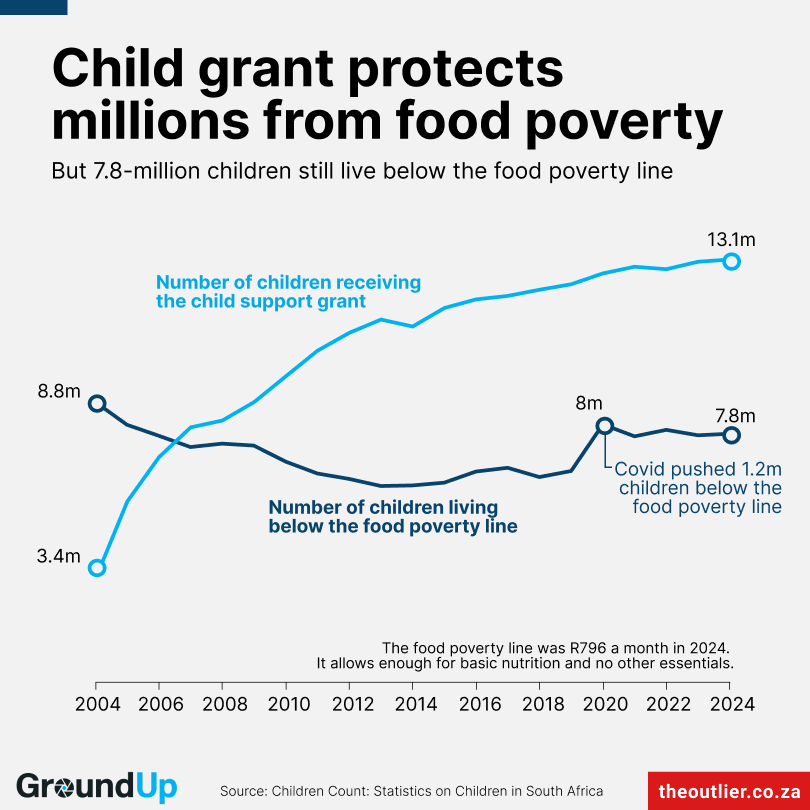Morocco Accelerates Nationwide Expansion of Social Protection for Millions of Citizens – Morocco World News

Report on Morocco’s Social Protection Reform and Alignment with Sustainable Development Goals
Executive Summary
Morocco is implementing a comprehensive social protection reform, marking a significant advancement toward an inclusive and equitable welfare system. This initiative, spearheaded by the National Social Security Fund (CNSS), directly supports the achievement of several United Nations Sustainable Development Goals (SDGs), most notably SDG 1 (No Poverty), SDG 3 (Good Health and Well-being), and SDG 10 (Reduced Inequalities). The reform has successfully expanded health coverage to nearly the entire population and introduced targeted financial aid, fundamentally reshaping the nation’s social contract and building the foundations of a robust social state.
Advancing Universal Health Coverage and Well-being (SDG 3)
The core of the reform is the generalization of Compulsory Health Insurance (AMO), a critical step towards ensuring healthy lives and promoting well-being for all, as mandated by SDG 3.
Expansion of Compulsory Health Insurance (AMO)
- Prior to the reform, national health coverage stood at 40%. It now encompasses nearly the entire population.
- The number of insured individuals has increased from 8 million to approximately 25 million.
- The volume of daily processed medical claims has surged from 20,000 to over 110,000, reflecting increased access to healthcare services.
Harmonization of Healthcare Access and Equity
In a direct effort to reduce health disparities, the system has been unified. All Moroccan citizens, irrespective of their employment status or income, are now entitled to the same package of care and reimbursement rates. This harmonization ensures that access to healthcare is based on need rather than economic standing, reinforcing the principles of SDG 3 and SDG 10.
System Sustainability and Cost Management
To ensure the long-term viability of universal health coverage, the CNSS is focused on strategic cost containment without compromising care quality. Key measures include:
- Lowering the prices of medicines.
- Enforcing standardized treatment protocols.
- Promoting preventative healthcare initiatives.
- Combating fraud and abuse within the system.
- Strengthening the public hospital sector to serve as the primary healthcare provider and help manage costs.
Eradicating Poverty and Reducing Inequalities (SDG 1 & SDG 10)
The reform establishes a robust social safety net designed to alleviate poverty and diminish systemic inequalities.
Targeted Social Support Mechanisms
The government has implemented programs that directly contribute to SDG 1 (No Poverty) by providing a crucial buffer for the most vulnerable households.
- Direct Financial Aid: Approximately 3.8 million low-income families receive direct financial support.
- AMO TADAMON: This program covers 11 million individuals, with the state paying their health insurance contributions. Beneficiaries gain access to both public and private healthcare facilities while retaining rights to free care in public hospitals.
The Role of the Unified Social Registry (RSU)
The Unified Social Registry (RSU) has been established as a critical mechanism for improving the targeting and efficiency of social aid programs. This data-driven approach ensures that support reaches those most in need, directly advancing SDG 10 by reducing inequalities in access to social protection.
Building Strong Institutions and Fostering Decent Work (SDG 16 & SDG 8)
The reform is underpinned by institutional strengthening and a forward-looking agenda to expand the social safety net, aligning with SDG 16 (Peace, Justice and Strong Institutions) and SDG 8 (Decent Work and Economic Growth).
Institutional Strengthening and Digital Transformation
The CNSS has deployed digital platforms such as TAAWIDATY and Damancom to streamline services for citizens and businesses. These technological tools enhance institutional effectiveness, transparency, and accessibility, which are cornerstones of SDG 16. An electronic medical claim system is also scheduled for piloting to further simplify procedures and reduce reimbursement times.
Challenges in Contributor Engagement
A primary challenge to the system’s sustainability is ensuring regular contributions, particularly from self-employed workers. Of the 1.7 million registered in this category, only 550,000 are current on their payments. This situation poses a risk of “anti-selection,” where only those with immediate health needs contribute, threatening the financial equilibrium of the system. However, awareness campaigns and new legal frameworks have improved the contribution rate from 21% to over 42% in under a year.
Future Reforms for a Comprehensive Social Safety Net
The government is actively working to complete two major reforms by the end of 2025, which will significantly strengthen the social safety net in line with SDG 8:
- The introduction of unemployment insurance.
- The expansion of retirement benefits to a wider segment of the population.
Which SDGs are addressed or connected to the issues highlighted in the article?
SDG 1: No Poverty
The article addresses SDG 1 by detailing Morocco’s efforts to establish a robust social safety net. The implementation of direct financial aid programs for low-income households is a key strategy discussed, directly contributing to poverty alleviation.
- The text highlights “direct financial aid to support low-income households, which now reaches 3.8 million families.”
- It also mentions the Unified Social Registry (RSU) as a mechanism for “improving the targeting and efficiency of these programs,” ensuring aid reaches the most vulnerable.
SDG 3: Good Health and Well-being
This is a central theme of the article. The focus on the generalization of Compulsory Health Insurance (AMO) directly aligns with the goal of ensuring healthy lives and promoting well-being for all at all ages.
- The article describes the expansion of health coverage as a “historic leap,” increasing the covered population from 40% to “nearly the entire population.”
- It emphasizes providing access to healthcare services, controlling costs by lowering medicine prices, and improving the public hospital system.
SDG 10: Reduced Inequalities
The reform’s objective to create a “more inclusive and equitable welfare system” directly connects to SDG 10. The article emphasizes that the new system eliminates disparities in healthcare access based on economic or employment status.
- It is explicitly stated that the reform allows “millions of Moroccans—regardless of their status—to access healthcare services with dignity and fairness.”
- The article notes that “Every Moroccan now receives the same care package and reimbursement rates, regardless of their employment or income level,” which is a direct measure to reduce inequality.
SDG 16: Peace, Justice and Strong Institutions
The article touches upon SDG 16 by describing the institutional reforms and technological tools being implemented to manage the new social protection system effectively and transparently.
- The National Social Security Fund (CNSS) is presented as the key institution driving the reform.
- The deployment of digital platforms like “TAAWIDATY,” “Damancom,” and the upcoming “electronic medical claim system” aims to “streamline citizen services” and build more effective and accountable institutions.
What specific targets under those SDGs can be identified based on the article’s content?
SDG 1: No Poverty
Target 1.3: Implement nationally appropriate social protection systems and measures for all, including floors, and by 2030 achieve substantial coverage of the poor and the vulnerable.
- The article’s entire focus on Morocco’s “sweeping social protection reform,” including health insurance, direct financial aid for 3.8 million families, and upcoming unemployment and retirement benefits, is a direct implementation of this target.
SDG 3: Good Health and Well-being
Target 3.8: Achieve universal health coverage, including financial risk protection, access to quality essential health-care services and access to safe, effective, quality and affordable essential medicines and vaccines for all.
- The article details the expansion of “Compulsory Health Insurance (AMO)” to cover “nearly the entire population,” up from 40%. It also mentions efforts to ensure access to care in both public and private facilities and to lower medicine prices, which directly aligns with achieving universal health coverage.
SDG 10: Reduced Inequalities
Target 10.4: Adopt policies, especially fiscal, wage and social protection policies, and progressively achieve greater equality.
- The reform is described as creating an “equitable welfare system.” The policy ensuring that “Every Moroccan now receives the same care package and reimbursement rates, regardless of their employment or income level” is a clear example of a social protection policy designed to achieve greater equality, as specified in this target.
SDG 16: Peace, Justice and Strong Institutions
Target 16.6: Develop effective, accountable and transparent institutions at all levels.
- The article highlights the role of the CNSS and the use of digital tools like the Unified Social Registry (RSU) to improve efficiency and targeting. The development of an “electronic medical claim system” to “simplify procedures” and “shorten reimbursement timelines” is a concrete step towards making public institutions more effective and transparent.
Are there any indicators mentioned or implied in the article that can be used to measure progress towards the identified targets?
Yes, the article provides several quantitative and qualitative indicators that can be used to measure progress.
- Proportion of population with health coverage: The article explicitly states this has increased from “40% of Moroccans” to “nearly the entire population.” This is a direct indicator for Target 3.8.
- Number of insured individuals: Progress is shown by the increase “from 8 million to nearly 25 million” insured individuals.
- Volume of processed claims: The growth in system usage is indicated by the increase in daily processed claims “from 20,000 to over 110,000.”
- Coverage of vulnerable populations: The article specifies that the “AMO TADAMON program alone covers 11 million people” and that “3.8 million families” receive direct financial aid, serving as indicators for Target 1.3.
- Contribution rates for social security: The article mentions the contribution rate for self-employed workers has “risen from 21% to over 42%,” indicating progress in the system’s financial sustainability.
- Implementation of digital services: The deployment of platforms like “TAAWIDATY,” “Damancom,” and the upcoming electronic claim system serve as qualitative indicators of progress towards Target 16.6 (developing effective institutions).
- Uniformity of benefits: The statement that all citizens receive the “same care package and reimbursement rates” is a qualitative indicator of progress towards Target 10.4 (achieving greater equality).
SDGs, Targets, and Indicators Analysis
| SDGs | Targets | Indicators |
|---|---|---|
| SDG 1: No Poverty | 1.3: Implement nationally appropriate social protection systems and measures for all. |
|
| SDG 3: Good Health and Well-being | 3.8: Achieve universal health coverage. |
|
| SDG 10: Reduced Inequalities | 10.4: Adopt social protection policies to progressively achieve greater equality. |
|
| SDG 16: Peace, Justice and Strong Institutions | 16.6: Develop effective, accountable and transparent institutions. |
|
Source: moroccoworldnews.com

What is Your Reaction?
 Like
0
Like
0
 Dislike
0
Dislike
0
 Love
0
Love
0
 Funny
0
Funny
0
 Angry
0
Angry
0
 Sad
0
Sad
0
 Wow
0
Wow
0












































































